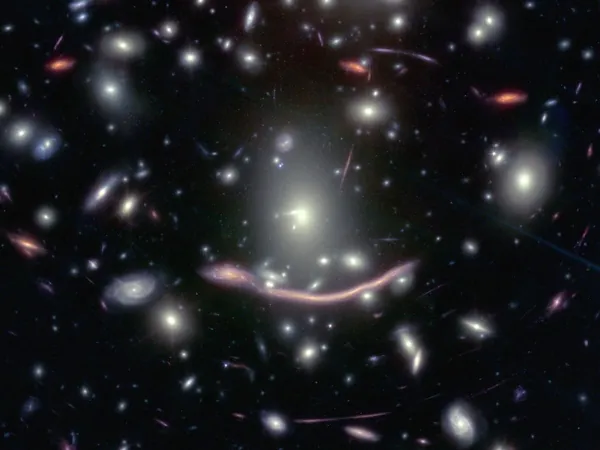
Historic Breakthrough: James Webb Telescope Uncovers 44 Ancient Stars Near the Big Bang!
2025-01-06
Author: Michael
Historic Breakthrough: James Webb Telescope Uncovers 44 Ancient Stars Near the Big Bang!
In a groundbreaking revelation, astronomers using the James Webb Space Telescope (JWST) have detected an astonishing 44 individual stars located 6.5 billion light-years away from our Milky Way. This remarkable discovery takes us halfway back to the universe's inception, marking the highest number of individual stars ever identified in such remote cosmic territory.
Harnessing the Power of Gravitational Lensing
The stunning images produced were made possible through a phenomenon known as gravitational lensing, where a massive cluster of galaxies, specifically Abell 370, occludes and distorts the space around it. This clever technique—often called an "Einstein ring" in honor of Albert Einstein, who first predicted this effect—allows light from distant stars to be bent into circular formations or arcs. In this case, astronomers observed a mesmerizing arc dubbed the "Dragon Arc," which provided the clarity needed to discern these long-lost stars.
In a paper recently published in Nature Astronomy, researchers from the Center for Astrophysics at Harvard & Smithsonian in Cambridge, Massachusetts, likened their innovative work to using binoculars to examine the moon and distinguish individual grains of dust in its craters.
A New Era of Cosmic Observation
"This groundbreaking discovery demonstrates, for the first time, that we can study large numbers of individual stars in a galaxy that’s incredibly distant," asserted Fengwu Sun, a postdoctoral researcher and co-author of the study. In contrast to earlier studies utilizing the Hubble Space Telescope, which only identified around seven stars, JWST has substantially expanded our observational capacities.
The monumental achievement poses a dual benefit for astronomers. Not only does it establish a new benchmark in observing individual stars, but it also opens doors to understand the enigmatic concept of dark matter—hypothetical particles that are believed to make up approximately 85% of all matter in the universe. These elusive particles do not emit, absorb, or reflect light or energy, rendering them invisible and challenging to study. "More observations of individual stars will enable us to gain insights into the distribution of dark matter within the lensing plane," Sun elaborated.
Spotlight on Red Supergiant Stars
Among the newly discovered stars in the Dragon Arc, many are identified as red supergiants, akin to Betelgeuse in the Orion constellation and Aldebaran in Taurus, both of which can be spotted in the evening sky. The JWST's advanced infrared sensitivity allowed these stars to come to life in unprecedented detail. "We've got a solid understanding of red supergiants within our local galactic neighborhood, enabling us to interpret their role in an early galaxy formation epoch through JWST observations," Sun stated.
As astronomers eagerly anticipate additional observations of magnified stars both in the Dragon Arc and other distant galaxies, it becomes increasingly clear that JWST’s capabilities are reshaping our understanding of cosmic history.
Stay tuned for the next chapter in this awe-inspiring astronomical journey—clear skies and wide eyes await!



 Brasil (PT)
Brasil (PT)
 Canada (EN)
Canada (EN)
 Chile (ES)
Chile (ES)
 Česko (CS)
Česko (CS)
 대한민국 (KO)
대한민국 (KO)
 España (ES)
España (ES)
 France (FR)
France (FR)
 Hong Kong (EN)
Hong Kong (EN)
 Italia (IT)
Italia (IT)
 日本 (JA)
日本 (JA)
 Magyarország (HU)
Magyarország (HU)
 Norge (NO)
Norge (NO)
 Polska (PL)
Polska (PL)
 Schweiz (DE)
Schweiz (DE)
 Singapore (EN)
Singapore (EN)
 Sverige (SV)
Sverige (SV)
 Suomi (FI)
Suomi (FI)
 Türkiye (TR)
Türkiye (TR)
 الإمارات العربية المتحدة (AR)
الإمارات العربية المتحدة (AR)